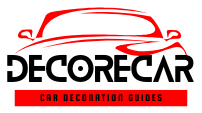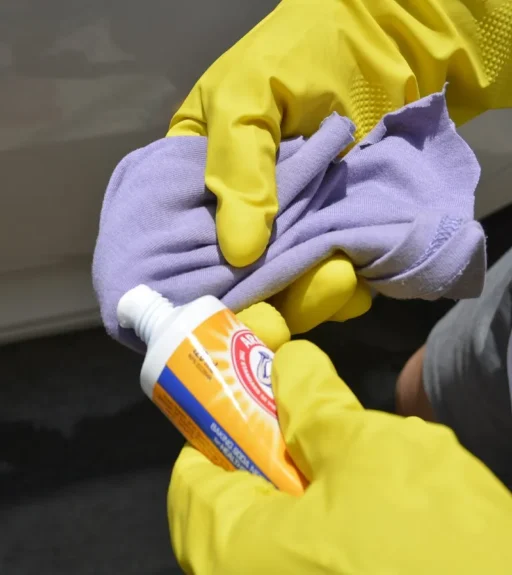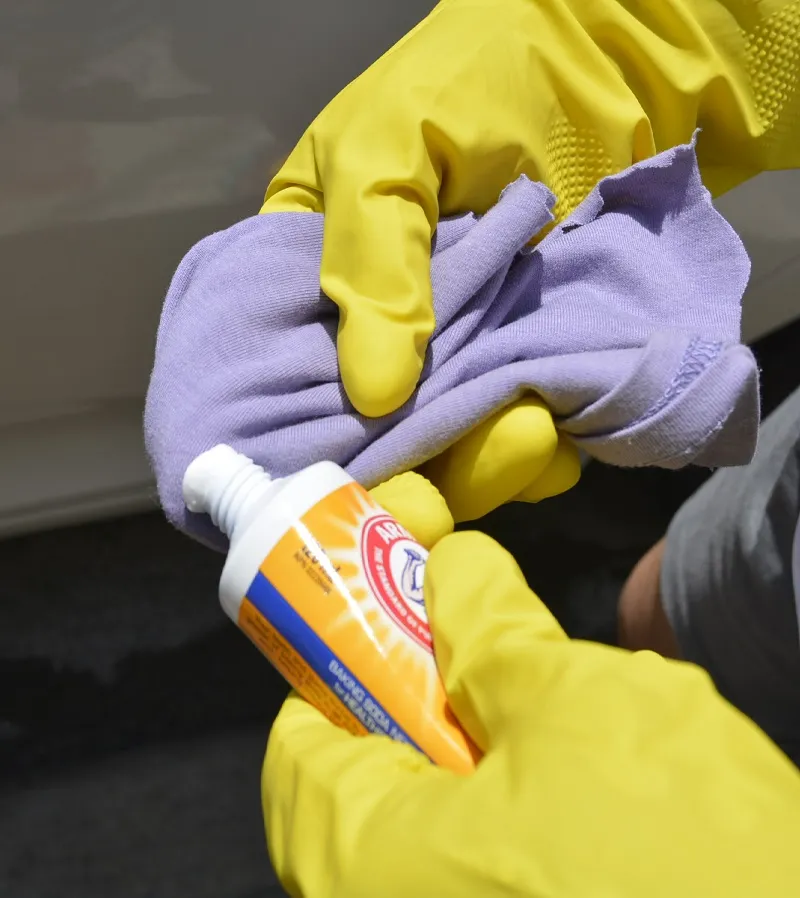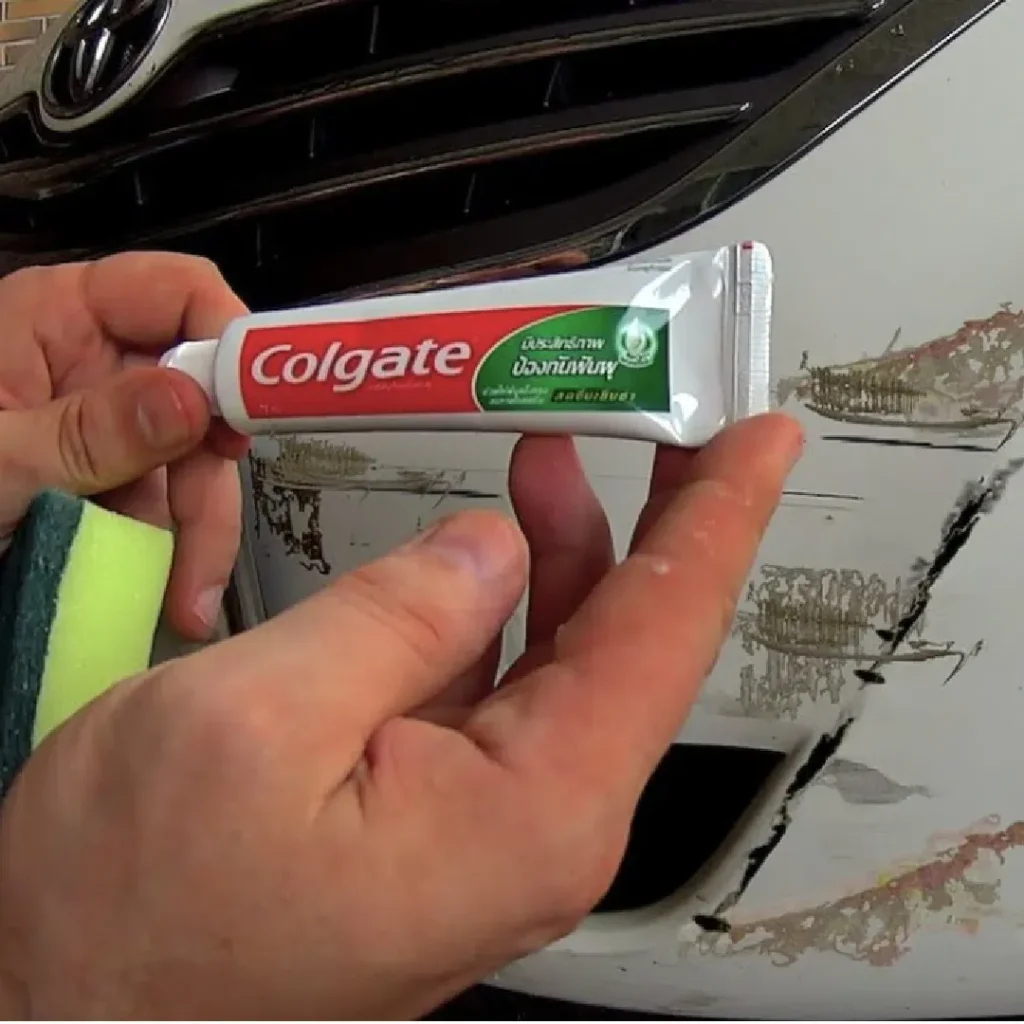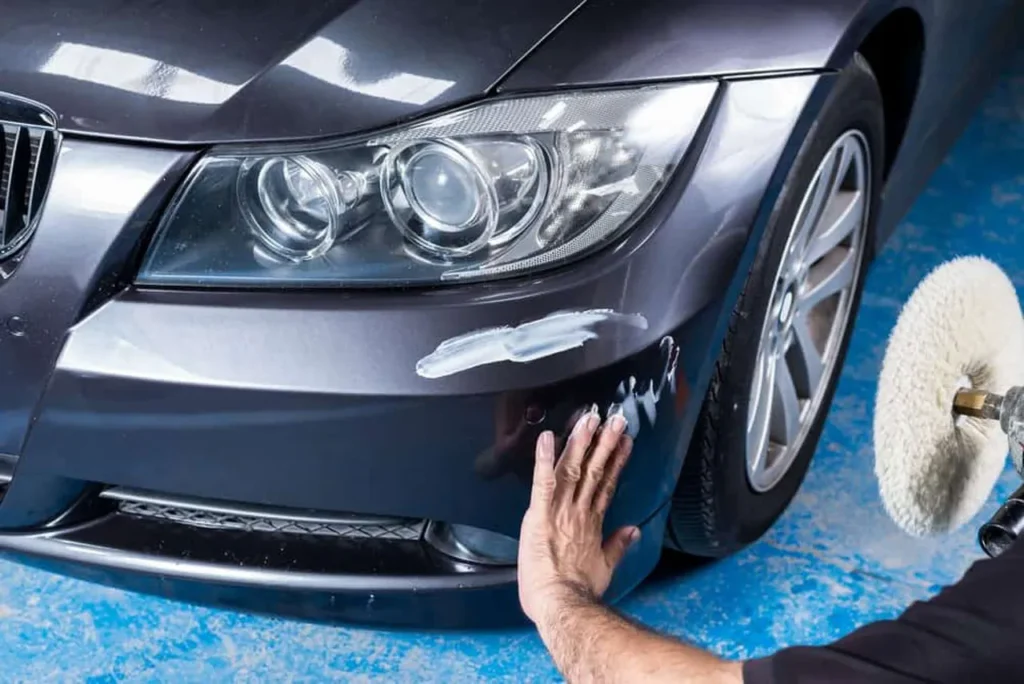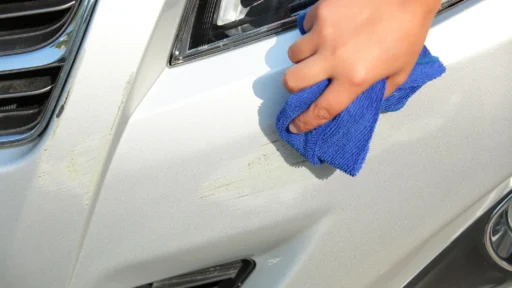Oh dear! Your car has a scratch. That can make you feel sad. But guess what? You might have a surprise helper in your bathroom. It’s toothpaste! Some people say toothpaste can help small scratches. Let’s see if it’s true and how to do it.
This story will help you know about car scratches. We will see if toothpaste can make them go away. We will use easy words.
What Kind of Scratch is on Your Car?
Not all scratches are the same. If you know the kind of scratch, you can see if toothpaste can help. Your car’s paint is like a yummy cake with layers!
Think that your car’s paint has layers like these:
- Clear Coat: This is the shiny, clear top part. You can see through it. It keeps the color paint safe.
- Color Paint: This is the real color of your car, like red, blue, or black.
- Primer: This is a helper paint under the color paint. It helps the color paint stick to the car.
- Bare Metal: This is the car’s strong body, made of metal.
Now, let’s look at the scratches:
First – The Clear Coat Scratch: The Easiest to Fix
A clear coat scratch is very light. It’s only on the top shiny part. If you touch it with your fingernail, you might just feel it a tiny bit. Toothpaste might work for these! Because they are not deep, they are easier to rub away.
Second – Embedded Paint Scratches: A Bit Deeper
These scratches go through the clear top part and into the color paint. You can feel them more with your fingernail. Sometimes, a little bit of the color paint is gone. Toothpaste might help a tiny, tiny bit with very light paint scratches, but it might not make them all gone.
Third – Primer Scratches: Getting More Serious
If you see a new color under your car’s main paint (like white or gray), the scratch has gone to the helper paint (primer). This means it’s gone through the clear top part and the color paint. Toothpaste will not fix these scratches. They are too deep.
Fourth – Bare Metal Scratches: The Deepest Kind
When a scratch is so deep that you see the shiny silver metal of the car, it’s a bare metal scratch. These are very bad because the metal can get sick if it’s not safe. We call this “rust.” Toothpaste cannot fix these at all. These scratches need good fixing so the car does not get rust.
Why You Should Fix Car Scratches Fast
Even small scratches can be a problem. Here’s why it’s good to fix them fast:
- Stop Rust: If a scratch goes down to the metal, water and air can touch it. This can make rust. Rust is like a sickness for car metal. Rust can grow and make bigger problems.
- Looks Nicer: Scratches don’t look nice. Fixing them makes your car look pretty and new.
- Keeps Car Worth More: If you want to sell your car one day, a car with no scratches can get more money.
- Stop Bigger Problems: A small scratch can get worse if you don’t fix it. Dirt can go in, and washing the car might make tiny bits of paint around the scratch get bigger.
So, trying to keep the paint safe and cover the scratch fast is smart. Even if it’s a tiny scratch, fixing it can stop problems later.
Using Toothpaste to Fix Light Car Scratches: Step-by-Step
Okay, so you have a very light scratch, just on the top shiny part. You want to try the toothpaste trick. Remember, this works best on tiny, tiny scratches that are not deep. Some toothpaste is a little bit rough, like very soft sandpaper. This can help smooth out a very light scratch.
What You’ll Need:
- Car wash soap and water
- Two soft, clean cloths
- White toothpaste (the plain white kind, not gel, and no big bits in it)
- Car wax (you don’t have to use it, but it’s good for after)
Step 1: Wash and Dry the Scratchy Part
First, clean the spot very well. Use soap and water to wash off all dirt. If you rub dirt on the scratch, it could get worse! Then, dry the spot all the way with a clean cloth.
Step 2: Put a Little Toothpaste on a Cloth
Put a tiny bit of toothpaste, like a small green pea, on your clean, wet cloth. Not too much! White toothpaste is often best because it has tiny polish bits in it. Don’t use toothpaste with lots of colors or things like cool bits.
Step 3: Softly Rub the Scratch
Now, rub the toothpaste on the scratch. Rub softly in little circles or back and forth on the scratch. Don’t push too hard! Be very soft, like you are cleaning a glass cup. Do this for a little bit, like counting to 30 or 60.
Step 4: Wash and Dry the Spot
After rubbing, use your other clean, wet cloth to wipe off all the toothpaste. Make sure it’s all gone. Then, dry the spot with a dry part of the cloth or a new dry cloth.
Step 5: Look and Do It Again if You Need To
Look close at the scratch. Is it gone? Or is it hard to see? If it looks a little better but is still there, you can try steps 2, 3, and 4 one more time. But don’t do it too many times, or you could hurt the paint.
Step 6: Put Wax on the Spot to Keep it Safe
If the scratch is gone or much better, it’s good to put a little car wax on that spot. Wax helps keep the paint safe and makes it shiny again. Read the words on your car wax to see how to use it.
Important Things to Know When Using Toothpaste
Using toothpaste is a cool trick, but there are some big things to remember.
Test First! Try a Hidden Spot
Before you put toothpaste on a scratch where everyone can see, try it on a hidden spot first. Maybe try a small spot low on the car or inside the door. This way, if the toothpaste makes the paint look not so good, it won’t be in a spot people see.
Don’t Rub Too Hard
Remember, some toothpaste is a tiny bit rough. That’s how it might take away the scratch. But if you rub too hard or for too long, you could rub off too much of the shiny top paint. This could make the paint look not shiny or even hurt it more. Be soft!
Toothpaste is Not for Deep Scratches
We talked about this, but it’s super, super important. If your fingernail gets stuck in the scratch easily, or if you see the helper paint (a different color) or the car’s metal, toothpaste will not fix it. It’s only for tiny, light scratches on the very top shiny part. Trying it on deep scratches will not work and is just a waste of toothpaste.
What if You See Bare Metal?
If the scratch is so deep you see the car’s metal, do not use toothpaste. This scratch needs to be fixed the right way to stop rust (the car sickness). You might need special paint or a car expert to fix it. Toothpaste won’t help and won’t keep the metal safe.
What if Toothpaste Doesn’t Work? Learning About Paint Fixing
So, you tried toothpaste, but the scratch is still there. Or maybe your scratch was too deep. Don’t worry! There are other ways to fix scratches. This is sometimes called “paint fixing.”
What is Paint Fixing?
Paint fixing is a way to make car paint look smooth and shiny again. It takes away things like scratches and dull spots. It uses special creams and tools. These creams are like toothpaste but are made just for car paint. Some are more rough, and some are more soft.
Think of it like making wood smooth. You might use rough sandpaper for big bumps, then soft sandpaper to make it very smooth. Paint fixing is like that but for your car’s shiny top paint.
Can You Do Paint Fixing Yourself?
Some people do paint fixing at home. You can buy kits for it. These kits have special creams and pads.
But, doing paint fixing yourself can be hard if you have not done it before.
- It takes time and you have to be careful.
- You need the right creams and maybe special tools, like a polishing machine.
- If you are not careful, you could hurt the paint more, especially with a machine.
A Simple Idea for Doing Paint Fixing Yourself (for very small problems): If you have a scratch that is a little deeper than what toothpaste can fix, but it’s still not down to the helper paint, you can look for a scratch fixing cream at a car parts store.
- Clean the Spot: Just like with toothpaste, make the spot super clean and dry.
- Put on the Cream: Read the words on the scratch fixing cream. Usually, you put a little on a special pad.
- Rub Carefully: Rub the cream on the scratch. The words will tell you how hard and for how long.
- Wipe Off and Look: Take off the leftover cream and look at the scratch.
- Polish and Wax: After the scratch is gone (or much better), you will want to make the spot shiny and then put wax on it to keep it safe.
When to Ask a Car Expert: If you have deep scratches, many scratches, or if you don’t feel good about trying it yourself, it’s best to ask a car paint helper or a car body shop. They know how to do it, have the right tools, and can fix scratches safely and make your car look super! (Maybe we can write another story about “When to Ask a Car Expert to Fix Scratches” – this is like an idea for another story).
The End: Toothpaste for Scratches – A Good Quick Fix or Not?
So, can toothpaste take scratches off your car? The answer is: sometimes, if they are very, very light ones. If you have a tiny, hard-to-see scratch that’s just in the top shiny paint, white toothpaste might be a cheap and easy trick to try. It works like a very soft polish.
Just remember the big rules:
- Only try it on super light scratches.
- Wash and dry the spot first.
- Use plain white toothpaste that is not a gel.
- Try it in a hidden spot first.
- Rub softly!
- It won’t fix deep scratches.
If the scratch is deeper, if you can see metal or the helper paint, or if the toothpaste trick does not work, stop rubbing. You might need a special car scratch fixing cream, or it might be time to let a car expert look at it.
Taking care of your car’s paint helps it look good and keeps it safe from big problems like rust. So, next time you see a tiny scratch, you might think about toothpaste – but now you know when it can help and when it can’t!
